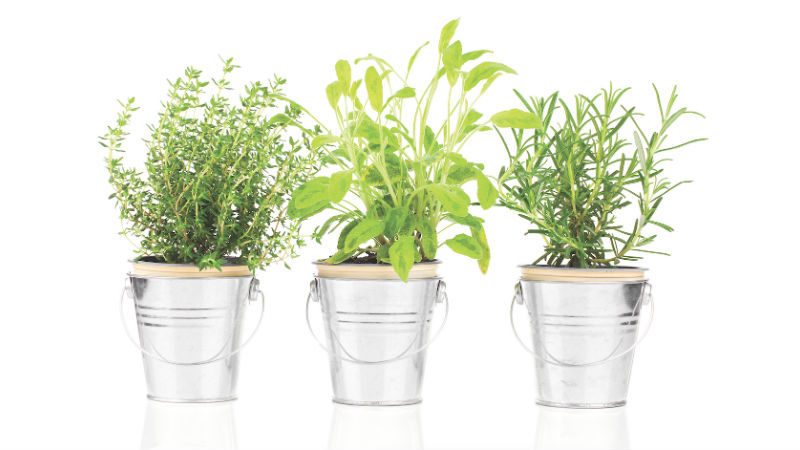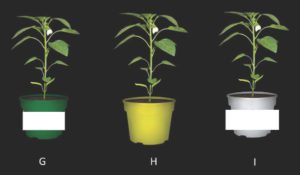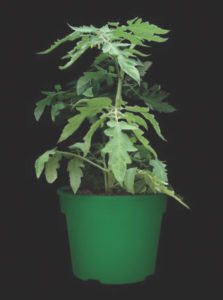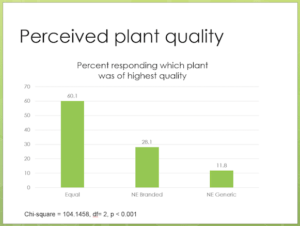
Out-of-the-Box Plant Packaging
People should be more interested in the plant than its package, right? Not so fast. Most of the non-agricultural products we buy on a regular basis (e.g., shampoo, toothpaste, etc.) come in a box or a bottle: a package. Even more interesting is the fact that to make a decision to buy the packaged product, many people use either the information on the package or from their prior experience; they never really get to see the product before they buy it. Not so in the wonderful world of horticulture.
But, if people can see the product (beautiful plant) before they buy it, does that make the package meaningless? Maybe not. Our research shows that some consumers rely primarily on the plant (not a real surprise) but others rely on the plant’s package to make their decision.
Plant packaging should be of interest to growers, wholesalers and retailers because non-horticultural companies have expanded their in-store marketing budgets overall due to the fact that more than 70 percent of all purchase decisions are made at the point of purchase. These packaged and/or branded products have varying shapes and colors that influence their attitudes and perceptions of the product, and ultimately, their decision to make the purchase. One study even showed that branding and packaging improved the odds that a consumer liked the product, especially when what the package communicated was consistent with what the consumer expected.

Branded products are often believed to have better quality and more durability. Branding can be an indication of product quality, such that some consumers believe that unbranded products can be a waste of money. But, could this possibly apply to horticultural products? Consumers who like brands a lot are more likely to give that brand some positive word of mouth; they may also be more willing to pay higher prices and are often more loyal to the brand.
Putting Packaging to the Test
Our goal was to understand a bit more about plant packaging, its importance in the purchase decision and especially the role that a brand played in that decision to buy or not buy a plant. We conducted an online survey in May 2014, to study how people of different ages viewed plants in branded and unbranded containers. Since the plants would be viewed on the computer screen, we made them digitally identical except for the brand and container color. We wanted to see who paid attention to the brand and how the color of the container would influence the decision to buy the plant.

We showed study participants images of 16 plants, varying the container color (white, green and yellow), plant type (basil, parsley, tomato and pepper), plant brand (generic and three national brands) and price. Of the 566 participants, we had nearly equal numbers from three age cohorts: Baby Boomers (ages 49 to 64), Gen X (ages 37 to 48) and Gen Y (ages 19 to 36).
First, we asked whether the participant had seen each of the three brands prior to the study and how familiar they were with the ones they had seen. We found that more Baby Boomers had seen or recognized Brand P before the study, whereas more Gen X and Gen Y participants had seen Brand L. Consumers who had seen the plant brands before the study were more likely to buy the branded plants compared with those who had not seen the plant brands before the study. However, both Gen X and Gen Y were more likely to buy any of the branded plants compared with Boomers.
What mattered most in their purchase decision? The type of plant (pepper, tomato, basil, parsley) was the most important part of their decision. That was not surprising and also was consistent with other consumer research. What was a new finding was that both price and brand were equally important to the decision to buy a plant, but both were less important than plant type. Plant type, brand and price were more important than container color. Having no brand on the container detracted $0.20 from the perceived value of the plant while the brands added up to a maximum of $0.15 to the perceived plant value! Remember that the plants are digitally identical, yet having a brand on the container added to the perceived value of the plant.
What about plant quality? We showed consumers four plants: three branded and one generic. We then asked them, “Which of these plants is of the highest quality, or are they about the same?” The results were surprising. Of the total, 60.1 percent said the plants were about of equal quality. That’s good news and quite logical. However, 28.1 percent of the sample said that the plants were not of equal quality and one of the plant brands was of higher quality than the other plants (even though they were digitally identical).

Another 11.8 percent of the sample said that the plants were not of equal quality and the generic plant was of higher quality.
The Bottom Line Is …
What is the bottom line about plant packaging? It does matter. Branding is one part of the packaging formula and mattered more to some consumers than to others. These findings suggest it is flawed thinking to believe otherwise. Price will always play a role in the purchase decision, but our work shows that plant brands are as important as price in the purchase decision.
While this study was limited to non-flowering plants (we wanted to focus nearly exclusively on the container and brand without confounding the findings with flower color), more work is underway. We need more research to improve our understanding of the role of plant packaging in the purchase decision.
This research was not possible without the generous funding from the corporate sponsors (Masterpiece Flower Company LLC and Dramm Corporation) and the USDA Federal-State Marketing Improvement Program, Horticultural Research Institute, and Michigan State University’s Project Greeen. Researcher salary for this project was supported by the USDA National Food and Agriculture, Hatch Project Number MICL 02085 and by Michigan State University AgBioResearch. A reprint of the full study can be obtained by contacting Bridget Behe (email below).


 Video Library
Video Library 




















